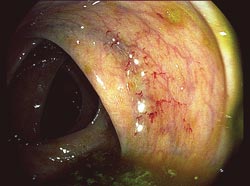In the US and elsewhere, health care reform is in the news, and the economy apparently is on the mend. These developments could bode well for the medical imaging market – or, if some worst case scenarios play out, they could portend problems.
The medical imaging market is growing very slowly, said Antonio Garcia, medical imaging industry manager at the Mountain View, Calif.-based market analysis firm Frost & Sullivan. He puts the increase in the neighborhood of 2 to 3 percent annually, with that figure somewhat fuzzy because of uncertainty in the overall economy. As for the size of the market, he pegged that at approximately $100 billion, but that’s an admittedly rough estimate.

“The medical imaging market is growing very slowly – around 2 to 3 percent annually.” Antonio Garcia, Frost & Sullivan
Within the total market, there are techniques that are based on x-rays, magnetic resonance, ultrasound and other methods, as well as those such as endoscopy that exploit visible light. In a July notice, the Centers for Medicare & Medicaid Services, which is part of the US Department of Health and Human Services, put the growth rate for computed tomography, magnetic resonance imaging and positron emission tomography at twice that of other imaging services, including endoscopy. Thus, the growth in medical imaging is primarily in more advanced – and costly – techniques.
This rate of increase may be about to slow because of changes in reimbursement. Also in its July note, the Centers for Medicare & Medicaid Services proposed cutting fees for advanced imaging, justifying the reduction because the equipment is being utilized more heavily than the 50 percent that had been expected. This greater usage means that expenses are being spread over more imaging sessions, which lessens the cost of any one session.
The new reimbursement scheme is slated to take effect in January 2010. Private insurers may follow the government’s lead in reducing payment for advanced imaging.
As for optical medical imaging, there are some signs of growth, if innovative products and services are involved. In August, Carl Zeiss Meditec of Jena, Germany, reported a 13.2 percent revenue increase in its ophthalmology business and a slight increase in its microsurgery division, attributing both, in part, to technological advances.
Tokyo’s Hoya Corp. recently noted favorable trends with regard to a new endoscope system compatible with megapixel imaging. Those extra pixels help provide a high-definition picture, such as one with a resolution of 1280 × 1024 in a 1080-pixel format.
Higher resolution and high definition are increasingly expected by the market, said Shannon Studebaker, processor product manager at Hoya’s Montvale, N.J.-based subsidiary, Pentax Medical Co. “As customers upgrade their infrastructure to support the hi-def signals and get the monitors that are capable of handling the signals, then the expectation is for more and more equipment to be able to output a format that is hi-def-equivalent.”

Still and video high-definition images are two trends in the medical imaging market. Here, a high-definition image of the colon shows diverticulitis as red spots that look like broken veins. Courtesy of Pentax Medical.
This push toward higher resolution in endoscopy is being driven, in part, by the fact that size, shape, color and appearance are important. Thus, capturing as much visual information as possible in the most lifelike way and with the most detail is vital.
But high-definition imaging brings challenges. One of these arises because endoscopy is moving toward video capture, noted Mathew Laughlin, a software product manager at Pentax. This continuous recording of a procedure is unlike other modalities, such as radiology, which image discrete slices.
High-definition video streams consume a large amount of data, which can tax systems that handle and store the information. These video streams also can contain a large amount of footage that ultimately is not relevant; it is difficult, however, to know beforehand what should be saved and what can be discarded.
Both issues can be helped by the right tool. Pentax software, for example, can allow clinicians to tag important points in the video stream automatically whenever they capture a still image, Laughlin said. “Anytime they capture an image, it actually throws an index into the video that will be 10 seconds before and 10 seconds after that image capture.”
This can be useful in a later review of the video, he added. “It gives them a heads-up that there was something important in that segment.”
The information can then be used to create a travelogue of the procedure, with the significant points preserved and the insignificant ones deleted. This compression makes both handling and storage of the video stream easier and more economical.
One standard for all
Although higher resolution and video are two optical innovations that are driving the medical imaging market, another trend involves what to do with the data after it has been acquired. Here, the norm is likely to be DICOM, the digital imaging and communications in medicine standard that is widely used in radiology. DICOM enables the integration of scanners, servers, workstations, printers and network hardware from multiple manufacturers into a picture archiving communications system, or PACS.
Nadim Daher, a senior industry analyst who covers medical imaging for Frost & Sullivan, noted that radiology PACS vendors have been looking at incorporating optical imaging results in their data management schemes. “For these guys, the next frontier is visible imaging. That’s the area they’re starting to look at from a research and development perspective.”

“For [PACS vendors], the next frontier is visible imaging. That’s the area they’re starting to look at from a research and development perspective.” Nadim Daher, Frost & Sullivan
These efforts at data unification have a long way to go, but Daher believes that it will be the radiology information technology infrastructure that prevails. He bases this prediction on the fact that a major part of the imaging that comes out of hospitals is radiology-based. Thus, it makes sense to use the tools already in place for such data.
Pentax’s Studebaker noted that requests for DICOM-compliant still images are increasingly frequent. He said that the company is in the process of making its systems satisfy such requirements.
Others report a similar convergence. Herbert Westin, senior director for surgery, urology and mobile x-ray for Siemens Healthcare of Malvern, Pa., said that, by using a DICOM format, data can be shared by e-mail or over the Internet. Siemens has a product for urologists that implements this approach. It presents the output from an x-ray on one screen and an endoscopic image on another. This method, he explained, makes it easier for urologists to use multiple imaging techniques seamlessly.
This integration extends to the data, with the image from the endoscope being converted into a standard format. Although there are many possible choices that could have been used, there really is only one that makes sense if is to be integrated with what is used in radiology, Westin said. “It has to become a DICOM image so it can be stored in the PACS and retrieved by somebody else.”